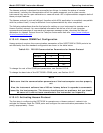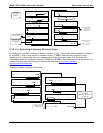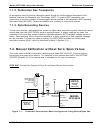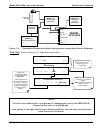
Model GFC7000E Instruction Manual Operating Instructions
04584 Rev A1 124
The Hessen protocol is designed to accomplish two things: to obtain the status of remote
instruments, including the concentrations of all the gases measured; and to place remote
instruments into zero or span calibration or measure mode. API’s implementation supports both of
these principal features.
The Hessen protocol is not well defined, therefore while API’s application is completely compatible
with the protocol itself, it may be different from implementations by other companies.
The following subsections describe the basics for setting up your instrument to operate over a
Hessen Protocol network. for more detailed information as well as a list of host computer
commands and examples of command and response message syntax, download the Manual
Addendum for Hessen Protocol from the Teledyne Instruments web site: http://www.teledyne-
ai.com/manuals/index.asp .
6.13.4.2. Hessen COMM Port Configuration
Hessen protocol requires the communication parameters of the MGFC7000E’s COMM ports to be
set differently than the standard configuration as shown in the table below.
Table 6-29: RS-232 Communication Parameters for Hessen Protocol
Parameter Standard Hessen
Data Bits 8 7
Stop Bits 1 2
Parity None Even
Duplex Full Half
To change the rest of the COMM port parameters. see Section 6.10.6.
To change the baud rate of the GFC7000E’s COMM ports, see Section 6.10.7.
NOTE
Make sure that the communication parameters of the host computer are also properly
set.
Also, the instrument software has a 200 ms. latency before it responds to commands
issued by the host computer. This latency should present no problems, but you should
be aware of it and not issue commands to the instrument too frequently.
6.13.4.3. Activating Hessen Protocol
The first step in configuring the GFC7000E to operate over a Hessen protocol network is to
activate the Hessen mode for COMM ports and configure the communication parameters for the
port(s) appropriately. Press:


















